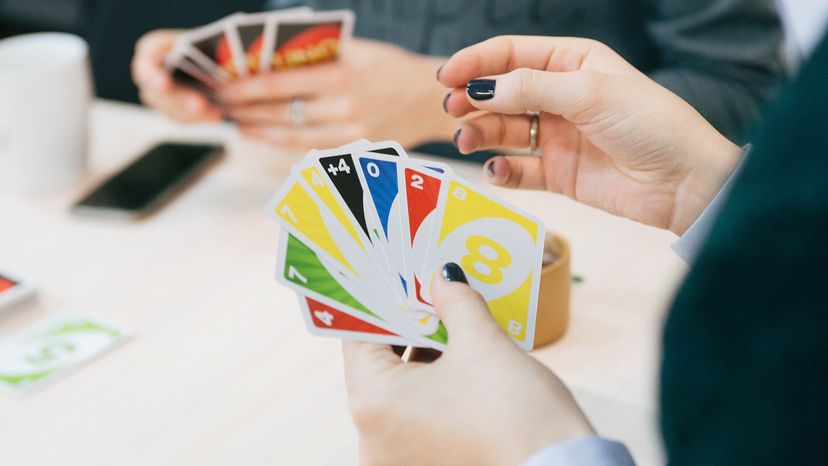UNO is a card game that two to 10 people can play at once. Players will match the top card on the discard pile by color, word or number. If a player does not have a card that matches the last played card, they will pick one up from the draw pile.
If they pick one that matches, then they will play it. If not, the next person will go.
You may have a playable card and opt to pick one from the draw pile. If you go this route, you can only play the card you picked up if it matches the last played card and not the others in your hand.
How Do You Win at UNO?
To win UNO, you need to get to 500 points. Each round, players attempt to get rid of their cards quicker than their opponents. Whoever manages to get rid of all their cards at the end of the round gets points for each of the cards their opponents are holding.
For example, if you are up against one person and they are holding a Wild Draw Four card (worth 50 points), a 2 (worth two points) and a skip card (worth 20 points) by the time you drop your last card onto the discard pile, you earned 72 points for that round.
If you play your last card and it's a Draw Two or Wild Draw Four card, the next person has to pick up two or four cards from the draw pile. These cards will count toward the tally.
Different Scoring Systems
There's a version of the game in which each player tallies how many points their cards are worth at the end of each round. When one player reaches 500, the game ends. The person with the lowest points, aka the person who got rid of most cards during the course of the game, wins.
There are different versions of the game, which has slightly changed since it launched in the 1970s. You can even play UNO online if you prefer.
Speak Up!
When you get down to your last card, you must shout "UNO!" or else you risk a penalty. If you don't say "UNO" by the time your second to last card touches the playing surface but another player does, then you have to pick up four cards.
If you forget to say it but another player goes and no one points it out, you don't have to pick up the four extra cards.
